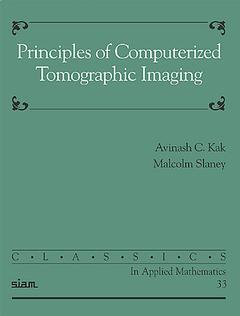Description
Principles of Computerized Tomographic Imaging
Classics in Applied Mathematics Series
Authors: Kak Avinash C., Slaney Malcolm
A comprehensive, tutorial-style introduction to the algorithms necessary for tomographic imaging.
Language: English
Subject for Principles of Computerized Tomographic Imaging:
Approximative price 83.43 €
Subject to availability at the publisher.
Add to cart
Publication date: 01-1987
341 p. · 18.8x23.4 cm · Paperback
341 p. · 18.8x23.4 cm · Paperback
Description
/li>Contents
/li>Comment
/li>
Principles of Computerized Tomographic Imaging provides a comprehensive, tutorial-style introduction to the algorithms for reconstructing cross-sectional images from projection data and contains a complete overview of the engineering and signal processing algorithms necessary for tomographic imaging. In addition to the purely mathematical and algorithmic aspects of these algorithms, the book also discusses the artifacts caused by the nature of the various forms of energy sources that can be used for generating the projection data. Kak and Slaney go beyond theory, emphasizing real-world applications and detailing the steps necessary for building a tomographic system. Since the fundamental aspects of tomographic reconstruction algorithms have remained virtually the same since this book was originally published, it is just as useful today as it was in 1987.
Preface; 1. Introduction; 2. Signal Processing Fundamentals; 3. Algorithms for Reconstruction with Nondiffracting Sources; 4. Measurement of Projection Data-The Nondiffracting Case; 5. Aliasing Artifacts and Noise in CT Images; 6. Tomographic Imaging with Diffracting Sources; 7. Algebraic Reconstruction Algorithms; 8. Reflection Tomography; Index.
Principles of Computerized Tomographic Imaging provides a comprehensive, tutorial-style introduction to the algorithms for reconstructing cross-sectional images from projection data and contains a complete overview of the engineering and signal processing algorithms necessary for tomographic imaging. In addition to the purely mathematical and algorithmic aspects of these algorithms, the book also discusses the artifacts caused by the nature of the various forms of energy sources that can be used for generating the projection data. Kak and Slaney go beyond theory, emphasizing real-world applications and detailing the steps necessary for building a tomographic system.Since the fundamental aspects of tomographic reconstruction algorithms have remained virtually the same since this book was or
© 2024 LAVOISIER S.A.S.

